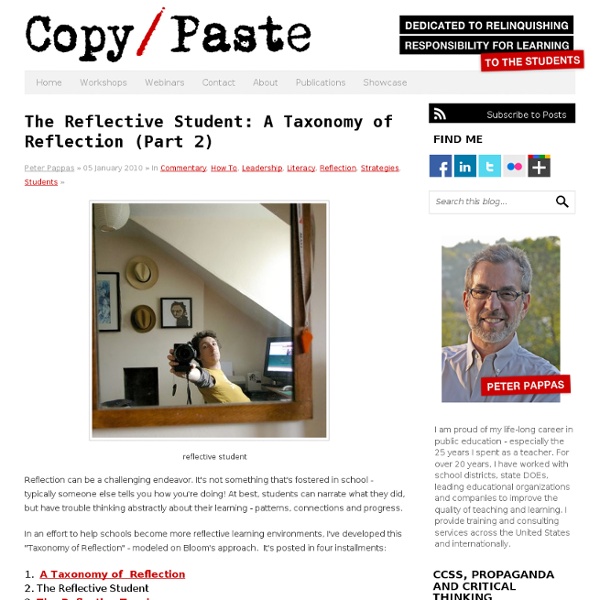The Reflective Student: A Taxonomy of Reflection Part 2

Dynamic Assessment: Components of a Mediated Learning Experience (MLE)
Modifiability is the way we describe the child's response to a MLE based on our observations during a teaching session. It is important to consider a child's modifiability when applying the MLE. Specifically, we are looking at child responsivity, transfer skills, and examiner effort. Child Responsivity How well does the child respond to the MLE? Transfer How well does child apply the target skills from one item to the next? Examiner Effort How much support does the child need? The other thing that we're doing during mediated learning is we're looking at child modifiability, and here we're describing what the child does in response to mediated learning. One is responsivity: How responsive is the child to intervention? The other is watching how they transfer. The third area that we look at is examiner effort. Previous Page | Continue to Example: Using Dynamic Assessment for Vocabulary Testing
What’s So Great About Schools in Finland?
Big Ideas Culture Teaching Strategies Flickr: Leo-seta The world looks to schools like this in Vantaankosken, Finland, as the model of success. Finland has been hailed for exemplifying the ideal model of a thriving, innovative education system that prioritizes the most important stakeholders: students. International and American media are fascinated by the Scandinavian country’s approach to designing the education system. So what makes the Finland story so compelling? THERE ARE NO PRIVATE SCHOOLS. Clearly, the Finland system can’t simply be picked up and dropped into the U.S. — in fact, Sahlberg himself advised against it: “Don’t try to apply anything,” he said in the Times article. There are too many divergent factors for that to happen. “You know, one big difference in thinking about education and the whole discourse is that in the U.S. it’s based on a belief in competition,” Sahlberg said. Related Explore: assessment, Finland, PISA
Why Kids Need Schools to Change
Big Ideas Flickr: Elizabeth Albert The current structure of the school day is obsolete, most would agree. Created during the Industrial Age, the assembly line system we have in place now has little relevance to what we know kids actually need to thrive. Most of us know this, and yet making room for the huge shift in the system that’s necessary has been difficult, if not impossible because of fear of the unknown, says educator Madeline Levine, author of Teach Your Children Well. “People don’t like change, especially in times of great uncertainty,” she said. “I’m astounded at the glacial pace of change in education.” During this time of economic uncertainty, especially, Levine said parents want to make sure their kids won’t fall into the ranks of the unemployed and disenfranchised young people who return home because they’re unable to find jobs. Yet therein lies the paradox. “I’m astounded at the glacial pace of change in education,” she said. PROJECT BASED LEARNING.
Homepage - Te Kete Ipurangi (TKI)
Related:
Related:



